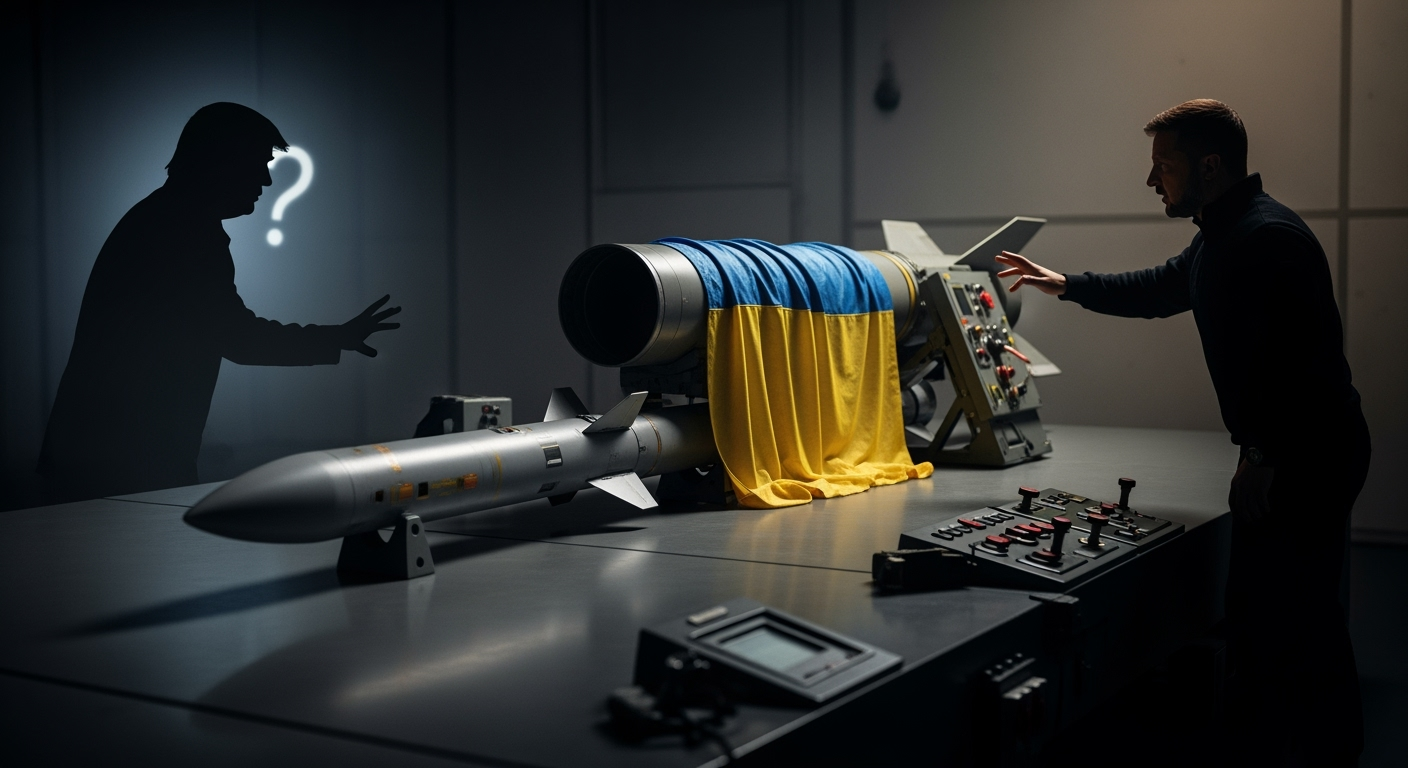Related Articles

Brazil Greenlights Offshore Oil Drilling Near Amazon Mouth Amid Environmental Outcry

Historic White House East Wing Demolition Underway for New Ballroom





Washington, D.C. — In a high-stakes diplomatic exchange, President Donald Trump has signaled a hesitant stance on supplying Ukraine with long-range Tomahawk cruise missiles, despite urgent appeals from Ukrainian President Volodymyr Zelenskyy, who views the advanced weaponry as critical to altering the course of the ongoing conflict with Russia. The recent White House meeting between the two leaders on Friday underscored a complex geopolitical landscape, balancing Ukraine's desperate need for enhanced military capabilities against Washington's strategic reservations and a renewed push for peace negotiations.
The debate over providing Ukraine with Tomahawk missiles, capable of striking deep within Russian territory, has placed President Trump at a crossroads. While he initially showed some openness to the idea, his position shifted following a phone call with Russian President Vladimir Putin, prompting expressions of concern about depleting U.S. military stockpiles and the potential for escalating the conflict. "We need Tomahawks and we need a lot of other things that we've been sending over the last four years to Ukraine," Trump stated, emphasizing the need to keep the U.S. "completely stocked up" for its own national security. "Hopefully they won't need it. Hopefully we'll be able to get the war over with without thinking about Tomahawks." This sentiment reflects a delicate balancing act for the administration, weighing support for an embattled ally against broader strategic risks and domestic military readiness.
President Zelenskyy, for his part, has actively pressed the case for Tomahawks, even presenting a "proposition" during the White House talks: Ukrainian advanced drones in exchange for U.S. long-range missiles. While Trump reportedly showed interest in the drone offer, he remained non-committal on the Tomahawks. Zelenskyy described the discussions as "productive" and maintained a "realistic" outlook, noting that President Trump "didn't say 'no'" to the missile request, implying that the door for future consideration remains open. Ukraine views these weapons as a potential game-changer, arguing that their deployment could create significant leverage to force Russia to the negotiating table.
For Kyiv, the acquisition of Tomahawk missiles represents a critical strategic objective. These cruise missiles, with a reported range of 995 to 1,500 miles, offer precision-guided capabilities and a low-altitude flight profile that makes them difficult for Russian air defenses to detect. Such a capability would allow Ukraine to target key Russian military installations, energy infrastructure, and logistics hubs far behind the front lines, locations currently beyond the reach of most of Ukraine's existing arsenal. Ukrainian officials believe that the credible threat of such strikes would compel Moscow to take peace negotiations more seriously. "It's very difficult just to operate only with Ukrainian drones," Zelenskyy explained, underscoring the need for the Tomahawks' specialized offensive power.
The effectiveness of Tomahawks in earlier conflicts, such as the Gulf War, Afghanistan, Libya, and Syria, highlights their potential impact. While traditionally launched from naval vessels, new ground-based launcher systems like the Typhon and X-MAV are emerging, potentially making them adaptable for Ukrainian forces. Russian authorities, including President Putin, have openly expressed alarm over the prospect of Tomahawks reaching Ukraine, labeling it a "serious escalation" that would significantly damage U.S.-Russian relations.
This latest episode of ambivalence surrounding military aid is not without precedent under the Trump administration. In March 2025, a temporary suspension of all U.S. military aid and intelligence sharing to Ukraine occurred following a strained meeting between Trump and Zelenskyy. The pause, linked to Trump's desire for Ukraine to commit to peace negotiations, introduced significant uncertainty into Ukraine's military planning. Such interruptions have been shown to force Ukrainian commanders to adopt more cautious strategies, prioritizing defense over offense and potentially emboldening adversaries.
Historically, the U.S. has been Ukraine's largest military aid provider, committing tens of billions of dollars in equipment and assistance since the full-scale invasion in 2022. However, the Trump administration has increasingly emphasized that European allies should shoulder a greater share of the financial and military burden, a position that has led to fluctuating levels of direct U.S. support.
President Trump has consistently championed a swift end to the conflict, urging both Ukraine and Russia to "stop where they are" and "make a deal." His focus on brokering peace is expected to culminate in an upcoming meeting with President Putin in Hungary, where they will discuss proposals for a resolution. Zelenskyy, while eager for a lasting peace, has previously asserted that Putin is not genuinely interested in ending the war on equitable terms. Despite this, the Ukrainian leader has voiced support for Trump's call to halt hostilities and engage in negotiations, albeit with a clear emphasis on securing robust security guarantees for Ukraine.
The future trajectory of U.S. military aid to Ukraine, particularly concerning high-impact weapons like Tomahawks, remains subject to the complex interplay of geopolitical strategy, domestic political considerations, and the evolving dynamics of the battlefield. As Ukraine continues to face relentless Russian aggression, the delicate balance between providing decisive military support and pursuing diplomatic solutions will define the path forward for all parties involved.